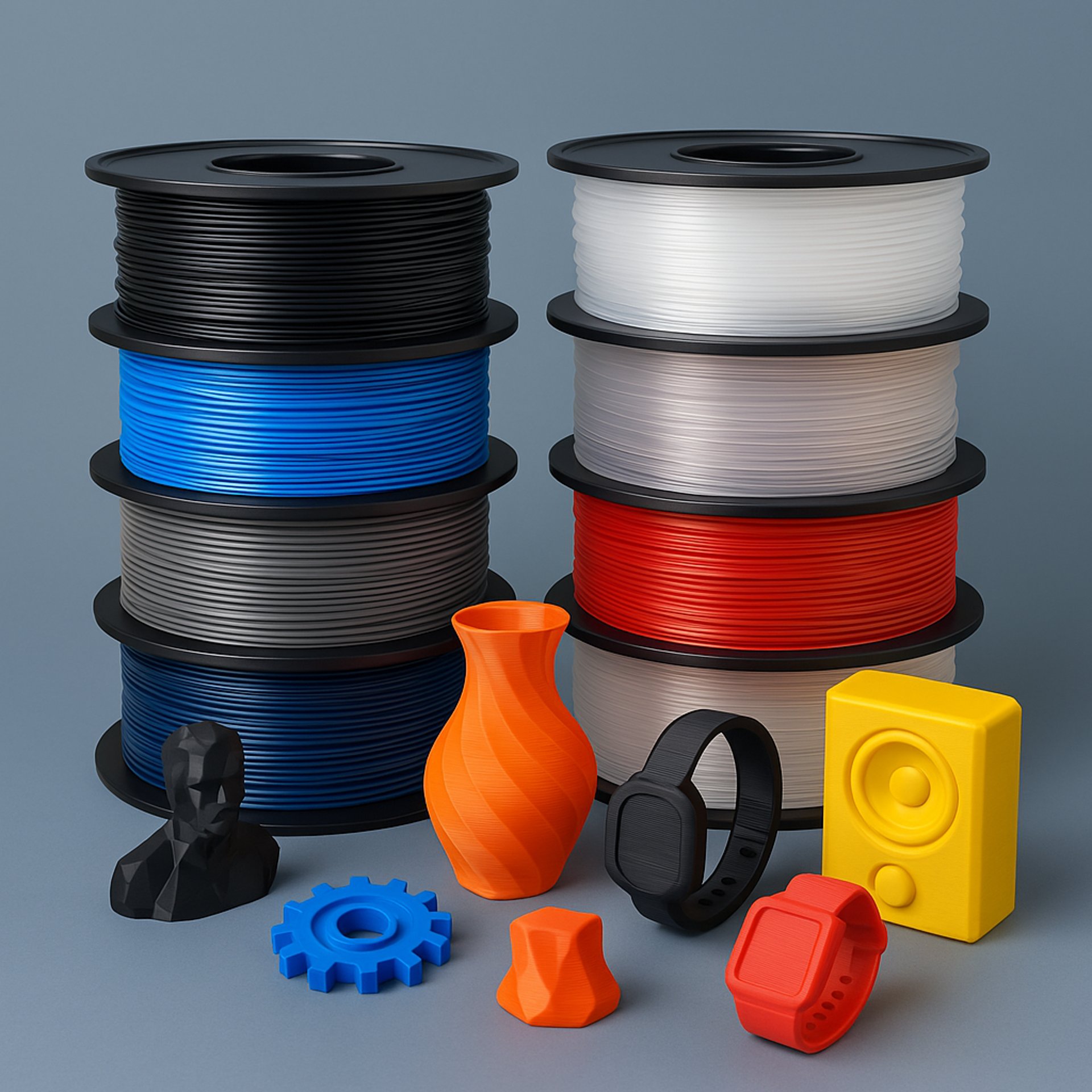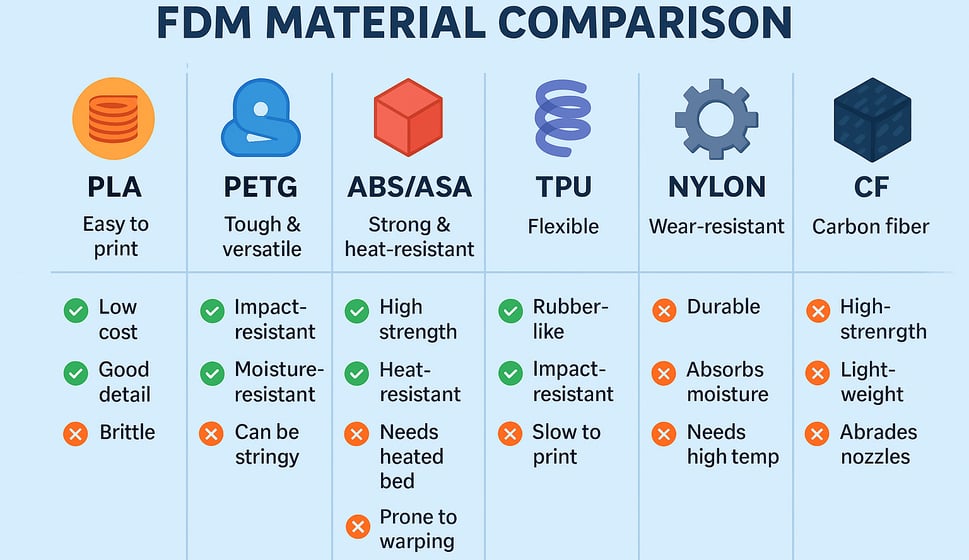
FDM 3D Printing Material Guide: Pick the Right Filament Like a Pro
Quick guide to FDM material selection
Emil Soliman
4/14/20252 min read


Whether you're prototyping your next big product or printing a part to fix your espresso machine (we’ve all been there), picking the right 3D printing filament can make or break your project.
With FDM 3D printing, you’ve got a whole toolbox of materials to choose from — each with its own strengths, quirks, and best-use scenarios. This guide will help you cut through the noise and confidently choose the perfect filament for your print.
Let’s break it down.
🧁 PLA — Sweet and Simple
Polylactic Acid (PLA) is your go-to for smooth, clean prints. It’s biodegradable, doesn’t warp much, and smells like popcorn when printing (ok, kind of). It’s perfect for beginners and prototypes that don’t need to take a beating.
🟢 Great for: concept models, cosplay props, demo parts
🔴 Not ideal for: anything under stress or near heat
🔥 ABS — Tough, But Temperamental
ABS is strong and heat-resistant — the same stuff LEGO bricks are made from. But it can be tricky to print with: it warps, stinks, and needs a heated bed (and ideally an enclosure). Still, when you get it right, it’s rock solid.
🟢 Great for: functional parts, tool housings, engineering projects
🔴 Not ideal for: casual users or open printers
💧 PETG — The Reliable Workhorse
PETG is like PLA and ABS had a super-capable child. It’s strong, flexible, less brittle than PLA, and easier to print than ABS. Plus, it’s water- and chemical-resistant, which makes it a favorite for functional parts.
🟢 Great for: mechanical parts, protective cases, containers
🔴 Watch for: stringing and cooling sensitivity
🌀 TPU — Bend It, Flex It, Love It
If you want parts that can bend, stretch, and bounce, TPU is your best friend. It’s perfect for flexible components, but printing it takes some patience — slow speeds and tuned settings are key.
🟢 Great for: phone cases, gaskets, shock absorbers
🔴 Not ideal for: fine detail or fast prints
🛡️ Nylon — The Heavy Hitter
Nylon is strong, tough, and built for the big leagues. It resists impact, abrasion, and chemicals — but it's a bit of a diva when it comes to moisture and requires high-temp printing.
🟢 Great for: gears, load-bearing parts, industrial applications
🔴 Not ideal for: casual printing or low-temp machines
🪶 Carbon Fiber-Filled Filaments — Lightweight Muscle
If you're after high performance without adding bulk, carbon fiber-filled filaments are where things get serious. These materials are usually based on Nylon, PETG, or PLA, but reinforced with chopped carbon fibers — making them stronger, stiffer, and more dimensionally stable.
The catch? They’re abrasive. You’ll need a hardened steel nozzle or a wear-resistant setup. But if you’re building functional prototypes, drone parts, brackets, or anything structural — they’re totally worth it.
🟢 Great for: lightweight structural parts, jigs, fixtures, performance prototypes
🔴 Not ideal for: standard brass nozzles, low-temp printers, fine detail
🔧 Popular Carbon-Filled Materials:
Carbon Fiber PLA – Easy to print, stiffer than regular PLA
Carbon Fiber PETG – Strong, chemical-resistant, great for enclosures
Carbon Fiber Nylon – Top-tier for toughness and industrial applications
How to Choose the Right Material (Without Guessing)
Does this part need to flex or stay solid?
Will it deal with heat, impact, or moisture?
Is it cosmetic or functional?
Can my printer handle the material?
Still unsure? We’ve got your back.
⚡ Instant Quotes, Smarter Prints
Upload your part on our platform, and we’ll help you pick the perfect material — with real-time quotes and AI-powered design feedback to catch problems before you hit print.
👉 Try the instant quote


